(June 1, 1926 – August 5, 1962), born Norma Jeane Mortenson, she was christened Norma Jeane Baker. After spending much of her childhood in foster homes, Marilyn began a career as a model, which led to a film contract in 1946.
Her early film appearances were minor, but her performances in The Asphalt Jungle and All About Eve (both 1950) were well received. By 1953, she had progressed to leading roles. Her “dumb blonde” persona was used to comedic effect in such films as Gentlemen Prefer Blondes (1953), How to Marry a Millionaire (1953) and The Seven Year Itch (1955).
Marilyn Monroe studied at the Actors Studio to broaden her range, and her dramatic performance in Bus Stop (1956) was hailed by critics, and she received a Golden Globe nomination. Her production company, Marilyn Monroe Productions, released The Prince and the Showgirl (1957), – made in England – for which she received a BAFTA Award nomination and won a David di Donatello award. She received a Golden Globe Award for her performance in Some Like It Hot (1959).
The circumstances of her death, from an overdose of barbiturates, have been the subject of conjecture. Though officially classified as a “probable suicide”, the possibility of an accidental overdose, as well as the possibility of murder, have not been ruled out. In 1999, Marilyn Monroe was ranked as the sixth greatest female star of all time by the American Film Institute – My own view is that she should have been first.
In the years and decades following her death, she has become a pop and cultural icon.
Marilyn Monroe was born in the Los Angeles County Hospital on June 1, 1926, as Norma Jeane Mortenson (soon after changed to Baker), the third child born to Gladys Pearl Baker, née Monroe (1902–1984).
Her successful modeling career brought her to the attention of Ben Lyon, a 20th Century Fox executive, who arranged a screen test for her. Lyon was impressed and commented, “It’s Jean Harlow all over again.” She was offered a standard six-month contract with a starting salary of $125 per week. Lyo
In 1948, Marilyn Monroe signed a six-month contract with Columbia Pictures and was introduced to the studio’s head drama coach Natasha Lytess, who became her acting coach for several years.
During her short time at Columbia, studio head Harry Cohn softened her appearance somewhat by correcting a slight overbite she had.
She had a small role in the Marx Brothers film Love Happy (1949). She impressed the producers, who sent her to New York to feature in the film’s promotional campaign Love Happy brought her to the attention of the talent agent, Johnny Hyde, who agreed to represent her. He arranged for her to audition for John Huston, who cast her in the drama The Asphalt Jungle as the young mistress of an aging criminal.
Her performance brought strong reviews, and was seen by the writer and director, Joseph Mankiewicz. He accepted Hyde’s suggestion of her for a small comedic role in All About Eve as Miss Caswell, an aspiring actress, described by another character as a student of “The Copacabana School of Dramatic Art”. Mankiewicz later commented that he had seen an innocence in her that he found appealing, and that this had confirmed his belief in her suitability for the role.
Following her success in these roles she got a seven-year contract with 20th Century Fox.
Marilyn enrolled at UCLA in 1951 where she studied literature and art appreciation, and appeared in several minor films playing opposite such long-established performers as Mickey Rooney, Constance Bennett, June Allyson, Dick Powell and Claudette Colbert.In March 1951, she appeared as a presenter at the 23rd Academy Awards ceremony.
In 1952, she appeared on the cover of Look magazine wearing a Georgia Tech sweater as part of an article celebrating female enrollment to the school’s main campus.
Over the following months, four films in which Marilyn featured were released. She had been loaned out to RKO Studios to appear in a supporting role in Clash by Night, a Barbara Stanwyck drama, directed by Fritz Lang. Released in June 1952, the film was popular with audiences, with much of its success credited to curiosity about Marilyn, who received good reviews from the critics.
This was followed by two films released in July, the comedy We’re Not Married, and the drama Don’t Bother to Knock. In Don’t Bother to Knock she played the starring role of a babysitter who threatens to attack the child in her care. The downbeat melodrama was poorly reviewed, although Marilyn said that it contained some of her strongest dramatic acting. Monkey Business, a comedy directed by Howard Hawks starring Cary Grant and Ginger Rogers, was released in September. This movie was a huge success.
Darryl F. Zanuck considered that Marilyn Monroe’s film potential was worth developing and cast her in Niagara, as a femme fatale scheming to murder her husband, played by Joseph Cotten. During filming, Monroe’s make-up artist Whitey Snyder noticed her stage fright (that would ultimately mark her behaviour on film sets throughout her career); the director assigned him to spend hours gently coaxing and comforting her as she prepared to film her scenes.
Her next film was Gentlemen Prefer Blondes (1953) co-starring Jane Russell and directed by Howard Hawks. Her role as Lorelei Lee, a gold-digging showgirl, required her to act, sing, and dance. The two stars became friends, with Jane Russell describing Marilyn as “very shy and very sweet and far more intelligent than people gave her credit for”. She later recalled that Marilyn showed her dedication by rehearsing her dance routines each evening after most of the crew had left, but she arrived habitually late on set for filming. Realising that she remained in her dressing room due to stage fright, and that Hawks was growing impatient with her tardiness, Jane Russell started escorting her to the set.
At the Los Angeles premiere of the film, Marilyn Monroe and Jane Russell pressed their hand- and footprints in the cement in the forecourt of Grauman’s Chinese Theatre. Monroe received positive reviews and the film grossed more than double its production costs. Her rendition of “Diamonds Are a Girl’s Best Friend” became associated with her.
How to Marry a Millionaire was a comedy about three models scheming to attract a wealthy husband. The film teamed Monroe with Betty Grable and Lauren Bacall, and was directed by Jean Negulesco. The producer and scriptwriter, Nunnally Johnson, said that it was the first film in which audiences “liked Marilyn for herself [and that] she diagnosed the reason very shrewdly. She said that it was the only picture she’d been in, in which she had a measure of modesty… about her own attractiveness.”
Her films of this period established her “dumb blonde” persona and contributed to her popularity. In 1953 and 1954, she was listed in the annual “Quigley Poll of the Top Ten Money Making Stars”
Then came a western River of No Return, opposite Robert Mitchum. Director Otto Preminger resented Monroe’s reliance on Natasha Lytess, who coached Marilyn and announced her verdict at the end of each scene. Eventually Monroe refused to speak to Preminger, and Mitchum had to mediate. Of the finished product, she commented, “I think I deserve a better deal than a grade Z cowboy movie in which the acting finished second to the scenery and the CinemaScope process.”
In late 1953 Monroe was scheduled to begin filming The Girl in Pink Tights with Frank Sinatra. When she failed to appear for work, 20th Century Fox suspended her.
She and Joe DiMaggio were married in San Francisco on January 14, 1954. They travelled to Japan soon after, combining a honeymoon with a business trip previously arranged by DiMaggio. For two weeks she took a secondary role to DiMaggio as he conducted his business, telling a reporter, “Marriage is my main career from now on.” She then travelled alone to Korea where she performed for 13,000 American Marines over a three-day period. She later commented that the experience had helped her overcome a fear of performing in front of large crowds.
Returning to Hollywood in March 1954, she settled her disagreement with 20th Century Fox and appeared in the musical There’s No Business Like Show Business. This film did not do well at the Box Office. Marilyn had made it reluctantly, on the assurance that she would be given the starring role in the film adaptation of the Broadway hit The Seven Year Itch September 1954, she filmed one of the key scenes for The Seven Year Itch in New York City. In it, she stands with her co-star, Tom Ewell, while the air from a subway grating blows her skirt up. A large crowd watched as director Billy Wilder ordered the scene to be refilmed many times. Among the crowd was Joe DiMaggio, who was reported to have been infuriated by the spectacle. After a quarrel, witnessed by journalist Walter Winchell, the couple returned to California where they avoided the press for two weeks, until Monroe announced that they had separated. Their divorce was granted in November 1954.
Milton Greene had first met Marilyn Monroe in 1953 when he was assigned to photograph her for Look magazine. While many photographers tried to emphasize her sexy image, Greene presented her in more modest poses, and she was pleased with his work. As a friendship developed between them, she confided in him her frustration with her 20th Century Fox contract and the roles she was offered. Her salary for Gentlemen Prefer Blondes amounted to $18,000, while freelancer Jane Russell was paid more than $100,000.Greene agreed that she could earn more by breaking away from 20th Century Fox. He gave up his job in 1954, mortgaged his home to finance Marilyn, and allowed her to live with his family as they determined the future course of her career.
In May 1955, Marilyn started dating playwright Arthur Miller; they had met in Hollywood in 1950 and when Miller discovered she was in New York, he arranged for a mutual friend to reintroduce them.
On June 1, 1955, Marilyn’s birthday, Joe DiMaggio accompanied her to the premiere of The Seven Year Itch in New York City. He later hosted a birthday party for her, but the evening ended with a public quarrel, and she left the party without him. A lengthy period of estrangement followed.
The Seven Year Itch was released and became a success, earning an estimated $8 million. Marilyn received positive reviews for her performance and was in a strong position to negotiate with 20th Century Fox.On New Year’s Eve 1955, they signed a new contract which required her to make four films over a seven-year period. The newly formed Marilyn Monroe Productions would be paid $100,000 plus a share of profits for each film. In addition to being able to work for other studios, she had the right to reject any script, director or cinematographer she did not approve of.
The first film to be made under the contract and production company was Bus Stop directed by Joshua Logan.
In Bus Stop, Monroe played Chérie, a saloon singer with little talent who falls in love with a cowboy. Bosley Crowther of The New York Times proclaimed: Marilyn Monroe has finally proved herself an actress.” he later wrote at she struck him as being a much brighter person than he had ever imagined.
During this time, the relationship between Marilyn and Arthur Miller had developed, and although the couple were able to maintain their. They were married on June 29, 1956.
Bus Stop was followed by The Prince and the Showgirl directed by Laurence Olivier, who also co-starred. Prior to filming, Olivier praised Marilyn Monroe as “a brilliant comedienne, which to me means she is also an extremely skilled actress”. During filming in England he resented her dependence on her drama coach, Paula Strasberg, regarding Strasberg as a fraud whose only talent was the ability to “butter Marilyn up”.
Despite Monroe and Olivier clashing, Olivier later commented that in the film “Marilyn was quite wonderful, the best of all.
Sadly she suffered a miscarriage on August 1, 1957. With Miller’s encouragement she returned to Hollywood in August 1958 to star in Some Like it Hot. The film was directed by Billy Wilder and co-starred Jack Lemmon and Tony Curtis. Wilder had experienced Monroe’s tardiness, stage fright, and inability to remember lines during production of The Seven Year Itch. However her behaviuor was now more hostile, and was marked by refusals to participate in filming and occasional outbursts of profanity.
Some Like it Hot became a resounding success, and was nominated for six Academy Awards. Monroe was acclaimed for her performance and won the Golden Globe Award for Best Actress – Motion Picture Musical or Comedy.
Wilder pointed out Marilyn Monroe’s “certain indefinable magic” and “absolute genius as a comic actress.”
However she had only completed one film, Bus Stop, under her four-picture contract with 20th Century Fox.
In 1956 Arthur Miller had lived briefly in Nevada and wrote a short story about some of the local people he had become acquainted with, a divorced woman and some aging cowboys. By 1960 he had developed the short story into a screenplay, and envisaged it as containing a suitable role for his wife. It became her last completed film. The Misfits, directed by John Huston and costarring Clark Gable, Montgomery Clift, Eli Wallach and Thelma Ritter. Shooting commenced in July 1960, with most taking place in the hot Northern NevadaMonroe was frequently ill and unable to perform, and away from the influence of Dr. Greenson, she had resumed her consumption of sleeping pills and alcohol. .
The Misfits received mediocre reviews, and was not a commercial success.
During the following months, Monroe’s dependence on alcohol and prescription medications began to take a toll on her health, and friends such as Susan Strasberg later spoke of her illness. Her divorce from Arthur Miller was finalised in January 1961.
Illness prevented her from working for the remainder of the year; she underwent surgery to correct a blockage in her Fallopian tubes in May, and the following month underwent gall bladder surgery.She returned to California and lived in a rented apartment as she convalesced.
In 1962 Monroe began filming Something’s Got to Give, which was to be the third film of her four-film contract with 20th Century Fox. It was to be directed by George Cukor, and co-starred Dean Martin and Cyd Charisse.
On May 19, 1962, she attended the birthday celebration of President John F. Kennedy at Madison Square Garden, at the suggestion of Kennedy’s brother-in-law, actor Peter Lawford. Monroe performed “Happy Birthday” along with a specially written verse based on Bob Hope’s “Thanks for the Memory”. Kennedy responded to her performance with the remark, “Thank you. I can now retire from politics after having had ‘Happy Birthday’ sung to me in such a sweet, wholesome way.”
Marilyn returned to the set of Something’s Got to Give and filmed a sequence in which she appeared nude in a swimming pool. Commenting that she wanted to “push Liz Taylor off the magazine covers”.
On August 5, 1962, LAPD police sergeant Jack Clemmons received a call at 4:25 a.m. from Dr. Ralph Greenson, Monroe’s psychiatrist, proclaiming that Monroe was found dead at her home in Brentwood, Los Angeles, California.She was 36 years old. At the subsequent autopsy, eight milligram percent of
On August 8, 1962, Marilyn Monroe was interred in a crypt at Corridor of Memories 24, at the Westwood Village Memorial Park Cemetery in Westwood, Los Angeles. Lee Strasberg delivered the eulogy.

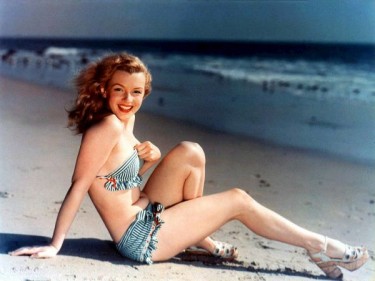
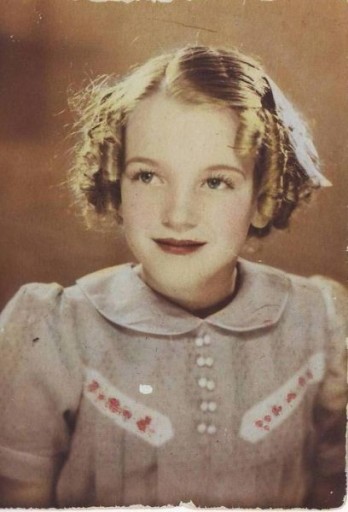
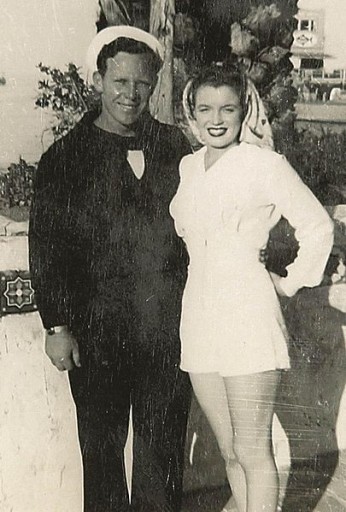


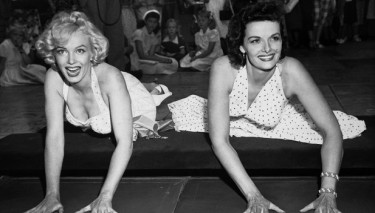
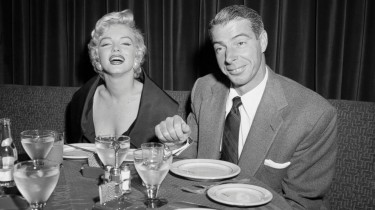
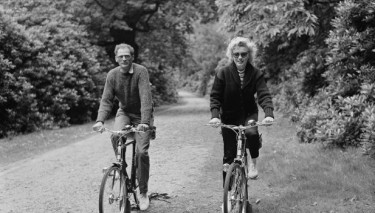
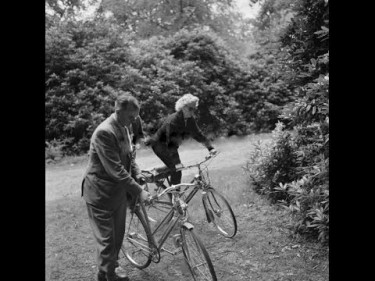
Place your comment